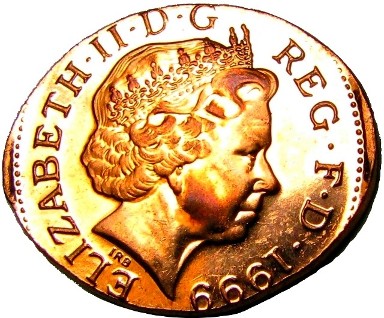Part V: Planchet Errors:
Blanking and Cutting Errors:
Elliptical clips:
Definition: Elliptical clips are one of the most desirable forms of incomplete planchets. The finished coin takes the form of an oval. The coin may be struck within the collar or outside the collar.
If struck within the collar, one side of the ellipse may nestle against the collar or only the tips of the ellipse may be in contact with the collar. Elliptical clips can also occur together with curved clips, straight clips, and ragged clips.
A number of theories have been advanced over the years to explain how elliptical clips occur. In most cases it would appear that a blank hangs up in its hole in the coin metal strip. When the strip fails to advance properly, the blanking die slices through the “hanging blank” producing an elliptical clip blank and a crescent clip blank. Another, less likely scenario has a freshly-punched blank somehow getting trapped beneath the moving strip, lagging behind, and getting sliced through a second time by a blanking die.
A once-popular theory had elliptical clips being derived from blanks with a deep incomplete punch. The blank was then said to fall apart prior to entering the coinage press. This theory no longer holds up under scrutiny. Elliptical strike clips are often mistaken for elliptical clips. The two errors are completely unrelated. An elliptical strike clip is a striking error while an elliptical clip is a planchet error.
For expanded treatment concerning clip diagnostics click here.
Below is a 1965 Lincoln cent with an elliptical clip.


A 2007-D dime with an elliptical clip and a curved clip that interrupts the right side of the ellipse.



